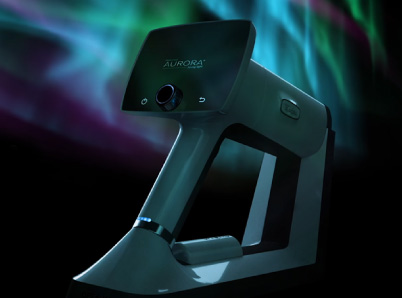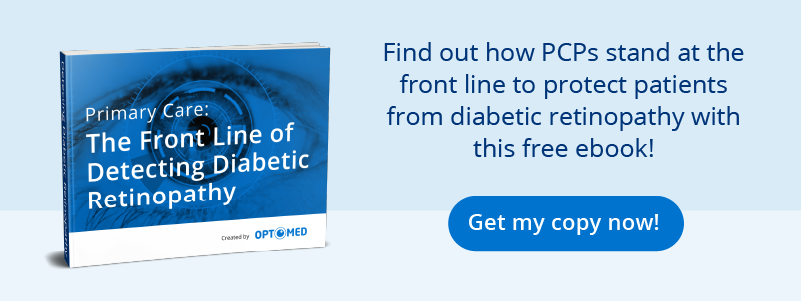The problem of diabetic retinopathy spans the globe. Despite its significant impact on health care costs and quality of life—and the fact that resulting vision loss is preventable with timely treatment—diabetic retinopathy remains undetected and under-treated in far too many cases.
Leading eye imaging company Optomed is determined to make eye care screening accessible to everyone. By developing technology that can reliably, affordably, and easily capture high-quality images, it has enabled primary care physicians (PCPs) to screen for diabetic retinopathy signs anywhere. Using a quality mobile handheld fundus camera, PCPs can overcome multiple barriers to screening and prevent needless vision loss.
Diabetic Retinopathy across the Globe
Diabetes is on the rise worldwide. In 1980, an estimated 108 million individuals had diabetes, according to the WHO Global Report on Diabetes. By 2014, this number had increased fourfold. Approximately 422 million people, almost 9% of the world’s population, had diabetes. These numbers are anticipated to continue to increase.
Every person with diabetes is at risk for developing diabetic retinopathy. One in three people is affected to some extent, and 75% experience diabetic retinopathy within ten years of diagnosis of diabetes.
The cost of diabetic-related eye disease is staggering, both in terms of individual quality of life and economic impact worldwide. Almost 12% of healthcare budgets globally can be attributed to diabetes and related complications.
Vision Loss Is Preventable with Screenings
Although preventable with early recognition and treatment, diabetic retinopathy is still the leading cause of blindness in adults aged 20-65. It is widely recognized that there remains a significant lack of screening and timely intervention. The reasons for this have been attributed to several barriers, such as lack of awareness, costs, convenience, and emotional resistance on the part of the patient.
Although costs and accessibility are two significant barriers to patient adherence to recommended screenings, a 2016 study published in JAMA found that even when these barriers are minimized, follow-up specialist care was lacking. Over half of the 949 study participants neglected to comply with diabetic retinopathy screenings.
Reasons that patients neglect to follow up include a lack of awareness about diabetes and the risks of complications, including blindness. Other factors are costs and inconvenience associated with screenings, such as travel to the screening center. Last but not least, emotional barriers exist, such as fear of laser treatment procedures or guilt over failing to control glucose levels.
Barriers identified on the provider’s side include a lack of strong advisory services pertaining to diabetic ocular screenings, inefficient systems for ensuring patients’ attendance to screening appointments, and long wait times or difficulties scheduling or accessing screening centers.
There is growing recognition that an effective way to overcome all these barriers may be to bring the screening directly into the PCP’s office during regularly scheduled annual exams, where eye screening can be accomplished along with other routinely scheduled wellness checks.
Reliable Results
For in-office screening to be viable, the results must be reliable. Images from non-mydriatic handheld fundus cameras have been studied at length. Evidence from dozens of independent clinical and case studies consistently demonstrates that these cameras provide reliable imagery that’s adequate for confirmation or exclusion of many common ocular diseases, including diabetic retinopathy.
Optomed’s Aurora handheld fundus camera has a full 50-degree field of view, optimal for diabetic retinopathy screening.
Money Matters
Having access to affordable equipment that works without installation or infrastructure costs makes a big difference, especially in today’s world of COVID-19 restrictions.
Handheld fundus cameras require little in the way of set-up or training. They can be put to use right away with a relatively small investment of time or money. Because reimbursement for fundus screening opens up an untapped revenue stream, any initial investment can be recouped quickly.
Easy to Use by Non-eye-care Specialists
Optomed’s camera is much less complicated to use than a direct ophthalmoscope. Even paraprofessionals can use it to obtain reliable results with little training. In a world where healthcare offices experience a great deal of staff turnover and budgetary constraints, this capability is a must.
Mobile Technology
Mobile screening technology opens up a wealth of opportunity. Doctors can screen for diabetic retinopathy signs in the exam room, at the bedside, or even in patients’ homes or drive-through clinics.
Handheld fundus cameras can be especially useful in rural locations and for patients who cannot easily travel due to economic constraints or health status.
HIPAA-Compliant Wireless Connection to EMR
This HIPAA-compliant device connects readily with local electronic medical records or patient management software.
Images captured at the PCP level can easily be read remotely by ophthalmologists or others when a need is indicated.
A Reputation for Customer Service
Optomed has been innovating and building handheld fundus cameras since 2004. It was the first to bring this technology to the market and has been continuously improving the product.
Now into its fifth generation, the Optomed Aurora is a non-mydriatic, handheld fundus camera featuring a 50-degree field of view—optimal for detecting diabetic retinopathy signs, as well as other eye disorders. It is designed for the utmost portability, ease of use, and image quality at an affordable price point.
Optomed prides itself on excellent customer service that provides support to its customers around the globe. It is featured on the International Agency for the Prevention of Blindness’ standards list of carefully evaluated, valued, and trusted products and companies.
PCPs Are Uniquely Positioned to Prevent Diabetic Retinopathy Related Blindness by Increasing Screening
Diabetic retinopathy is treatable, and resulting vision loss preventable when screened in time, but this is widely not the case.
Patients experience many barriers to routine screening, including lack of awareness of its importance, emotional adversity, and difficulties relating to cost or convenience.
A growing body of evidence shows that a potential solution to this challenge is to bring screening directly into the PCP’s office. Since it requires no eye dilation, non-mydriatic fundoscopy using a handheld camera is fast and can easily be accomplished within the visit’s time frame.
When screening can be done in office, nearly 100% adherence can be achieved in those patients who report for annual physicals or checkups. Furthermore, a mobile handheld fundus camera opens up many potential opportunities for creative solutions to reach even more of the population at risk for vision loss due to diabetic retinopathy.
When PCPs can quickly and easily scan for signs of diabetic retinopathy, it can result in significantly better screening compliance, earlier treatment, and a much-improved prognosis to avoid blindness.
Here at Optomed, our mission is to help save the vision of millions of people. By integrating our software and artificial intelligence solutions with our camera, we enable eye screening for everyone, wherever they are. To see how we can equip you to save the sight of more patients, schedule a free consultation today!



